Editor’s Note: This article primarily features the SIGMA 24-35mm F2 DG HSM | Art lens, which has since been discontinued from SIGMA’s Art lineup.
Aquariums present a number of challenges for photographers hoping to make keepsake photos of a visit to view undersea animals. Between the dim lighting conditions, highly reflective surfaces, and active subjects, it can be a recipe for disappointment. Here are some tips and tricks to up the odds of landing a winning shot of sharks and other aquatic animals the next time you visit the aquarium.
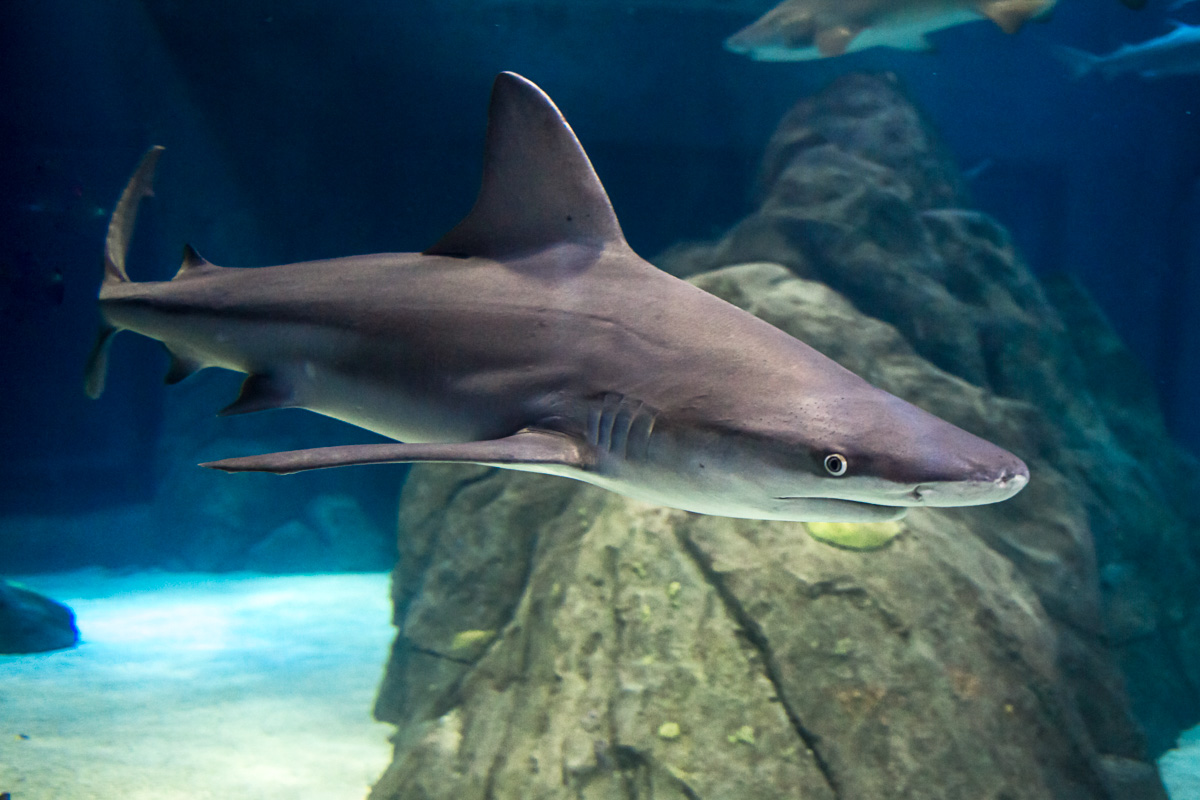
Pack a fast-aperture wide angle lens
For my visit to the Adventure Aquarium, I chose the SIGMA 24-35mm F2 DG HSM | Art lens as my go-to lens for almost all the photos in this piece. The wide-angle field of view and very fast F2 aperture allowed for fast shutter speeds in the ever-changing interior lighting conditions both inside and outside the giant tanks.
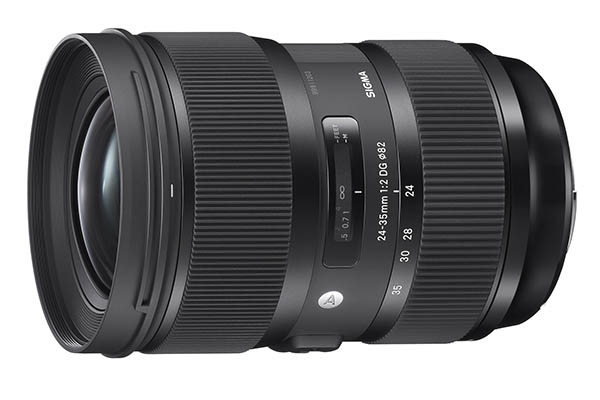
Other great lens options include the full-frame 24mm F1.4 DG HSM | Art, 24-70mm F2.8 DG OS HSM | Art, and the 17-70mm F2.8-4.0 DC OS HSM | Contemporary and the 18-35mm F1.8 DC HSM | Art lenses for APS-C cameras like the Canon Rebel Series, 7D, and DX-format Nikon DSLRs. If you don’t have a super-fast lens in your bag, make sure you are shooting with your kit zoom as wide open as it will go, usually F3.5, for the most light-gathering power.
Choose the highest ISO you are comfortable with on your camera, and shoot RAW plus JPG
The High ISO performance on modern DSLRs, combined with very smart noise reduction, particularly when shooting RAW and using a leading Raw Converter like Adobe Camera Raw or Lightroom, has opened up new possibilities for imaging. Be sure to have an sense of how your DSLR and chosen RAW converter can work together for sharp, high-ISO images with minimized noise. I chose to cap my ISO at 1600 on my 6D for these photos, knowing I might be doing some aggressive post-processing to gain up the exposures and tone down the chrominance noise.
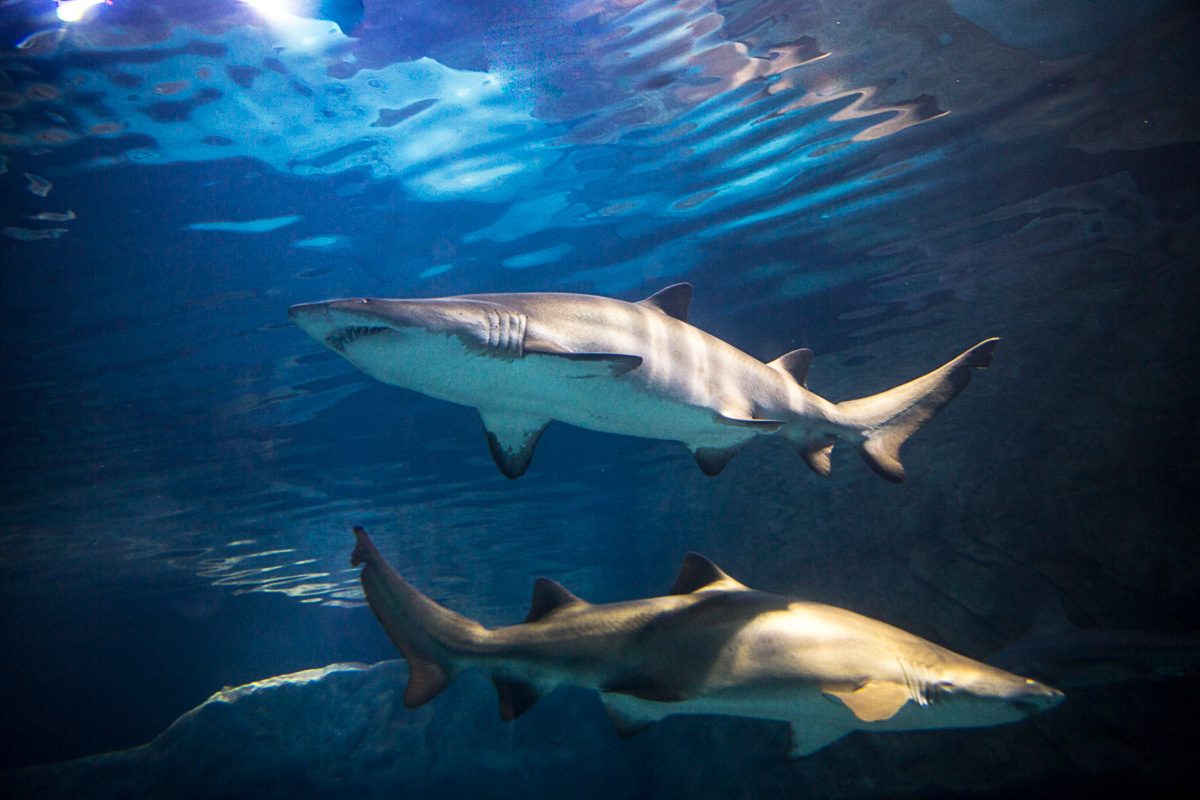
Consider Metered Manual Exposure mode
Depending on the exhibit, the proper or best exposure can vary significantly from what a metered program mode is determining it to be. Even when you switch to manual exposure mode, the meter keeps on working, and is visible through the viewfinder. Use this as a baseline, and set a manual exposure based on a test shot, and then review the histogram and adjust shutter speed and ISO up or down accordingly. Too slow a shutter speed will allow for camera shake and subject movement blur, too fast an exposure will dramatically underexpose a scene. But modern DSLRs have much greater latitude, and being a few stops underexposed isn’t as dreadful now as it was a decade ago.
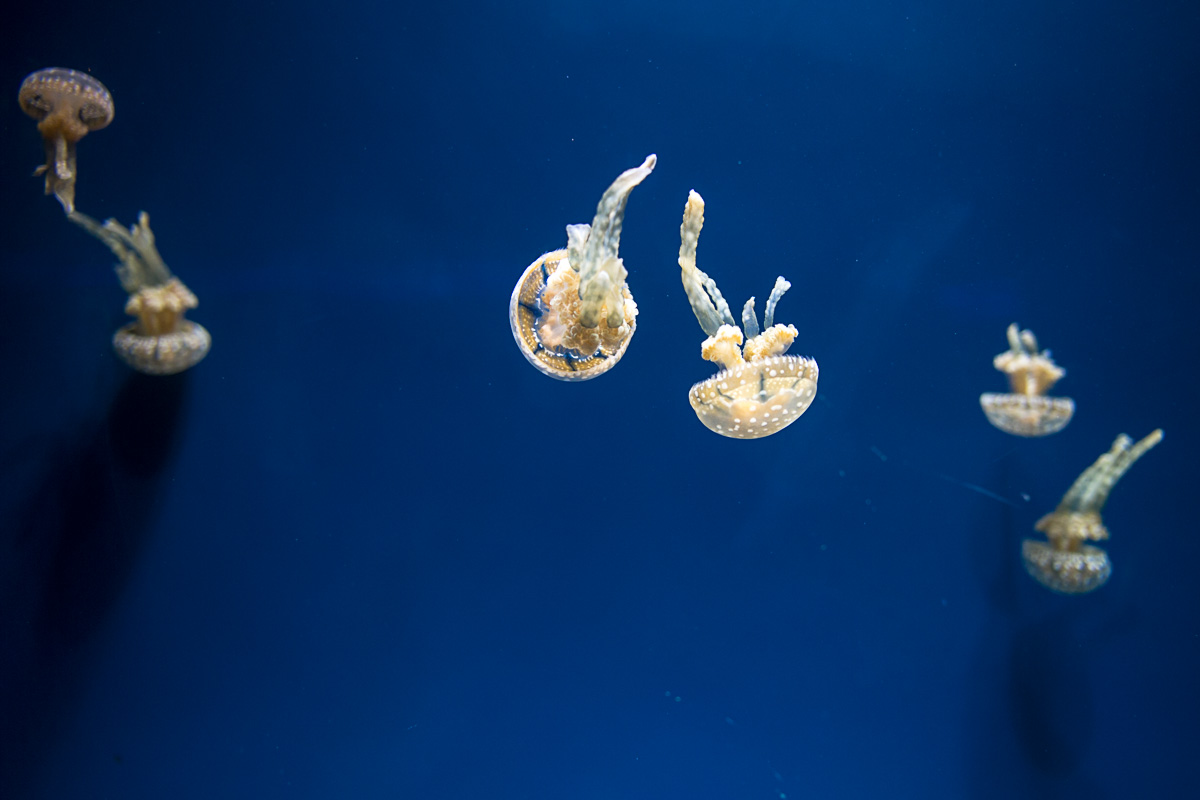
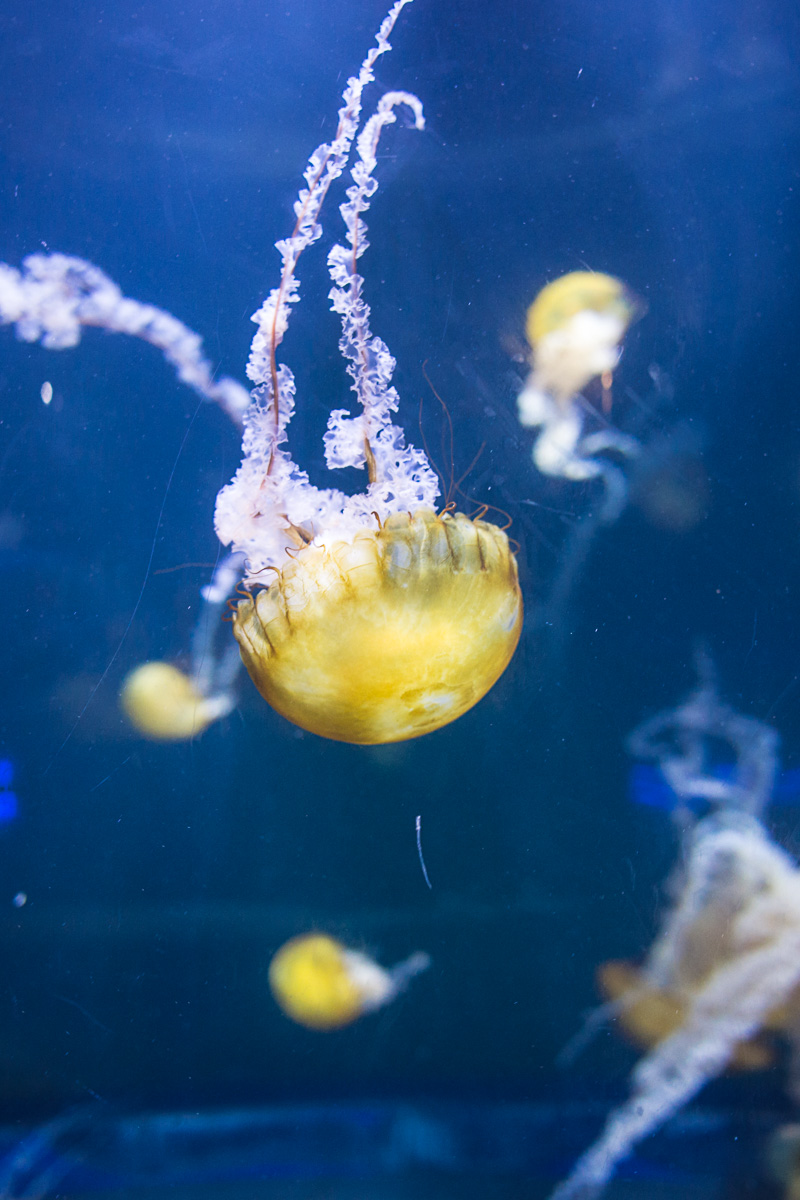
Skip the polarizer
Normally, it makes sense to use a polarizer to cut glare, but with the thick “glass” of an aquarium, which may be glass, or might be acrylic, the overall loss of light associated with a highly effective polarizing angle usually doesn’t make much sense.
Manage reflections if you can’t avoid them entirely
Take it as a given that you won’t be able to totally avoid some reflections and glare; but make sure anything glaring is away from the main subject and focus point of the image. A slight change of angle or position can very easily put a reflection right on top of your subject, or move it to the edge, or even out of frame.
And then, if you want, use healing tools and cloning brushes to sweep them away, when possible.
Or use the reflections and lights as design elements. For example, here the sea turtle, rays, and sharks are all positioned around the reflections of rooflights over the giant tank.
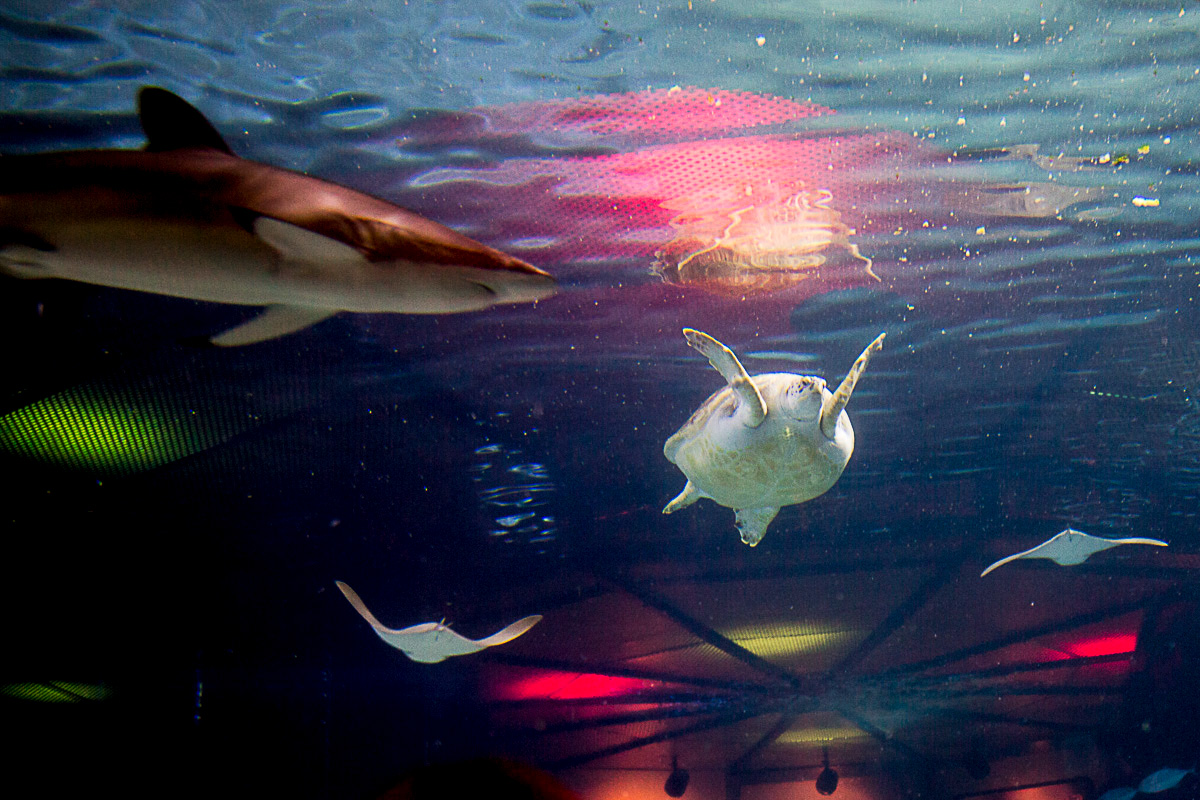
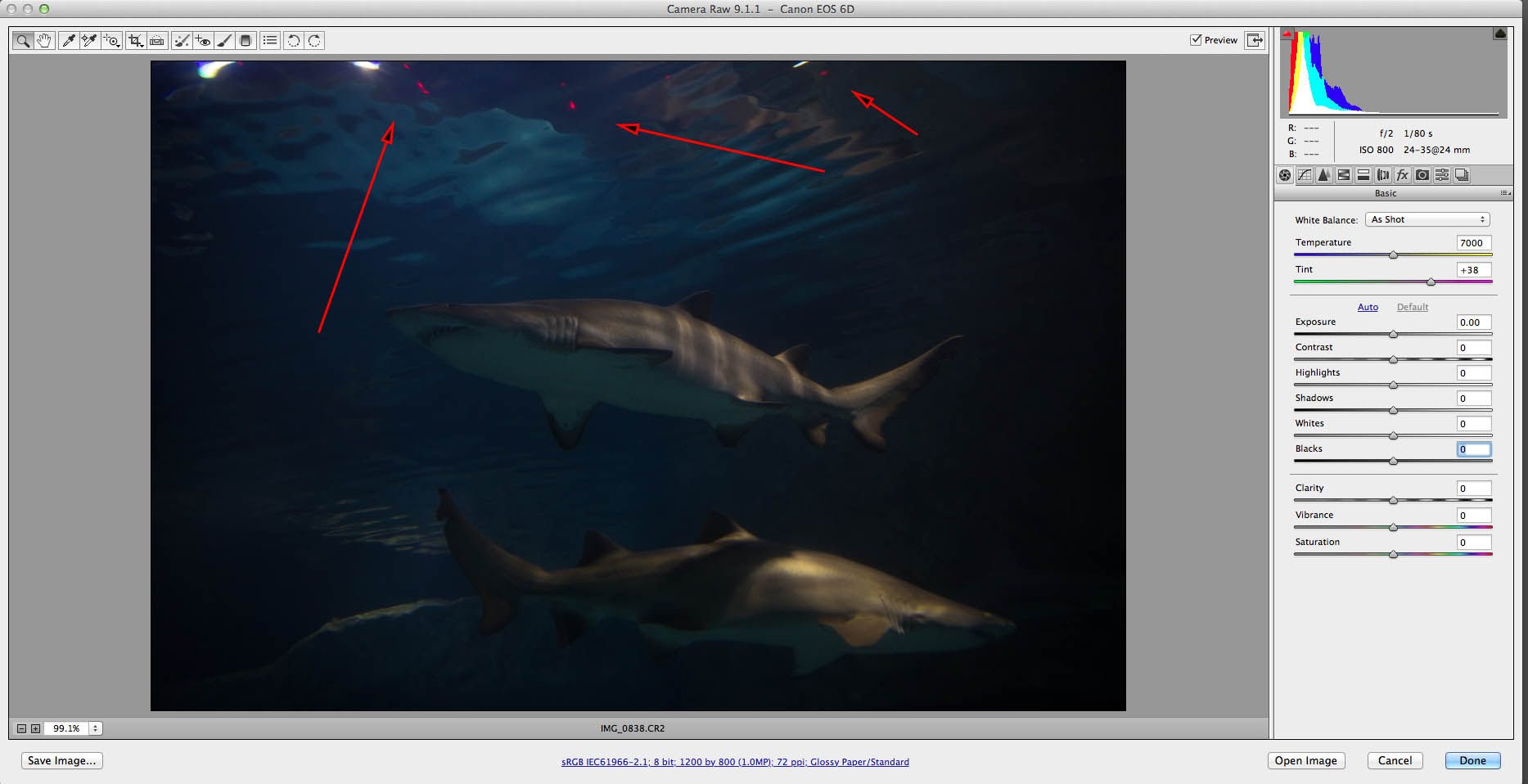
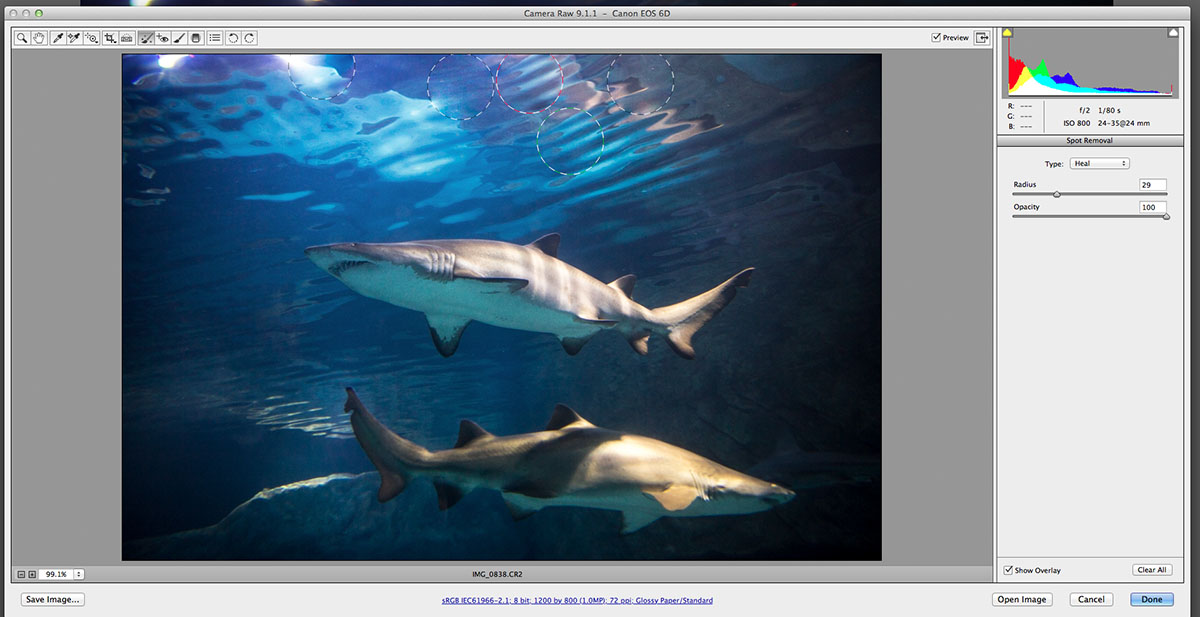
Frame the Photo with people for Scale
Stand a little ways back from a large viewing window into a tank and wait for a large sea creature to swim between or above some of the silhouetted people in the foreground to give a sense of scale and place to the scene.
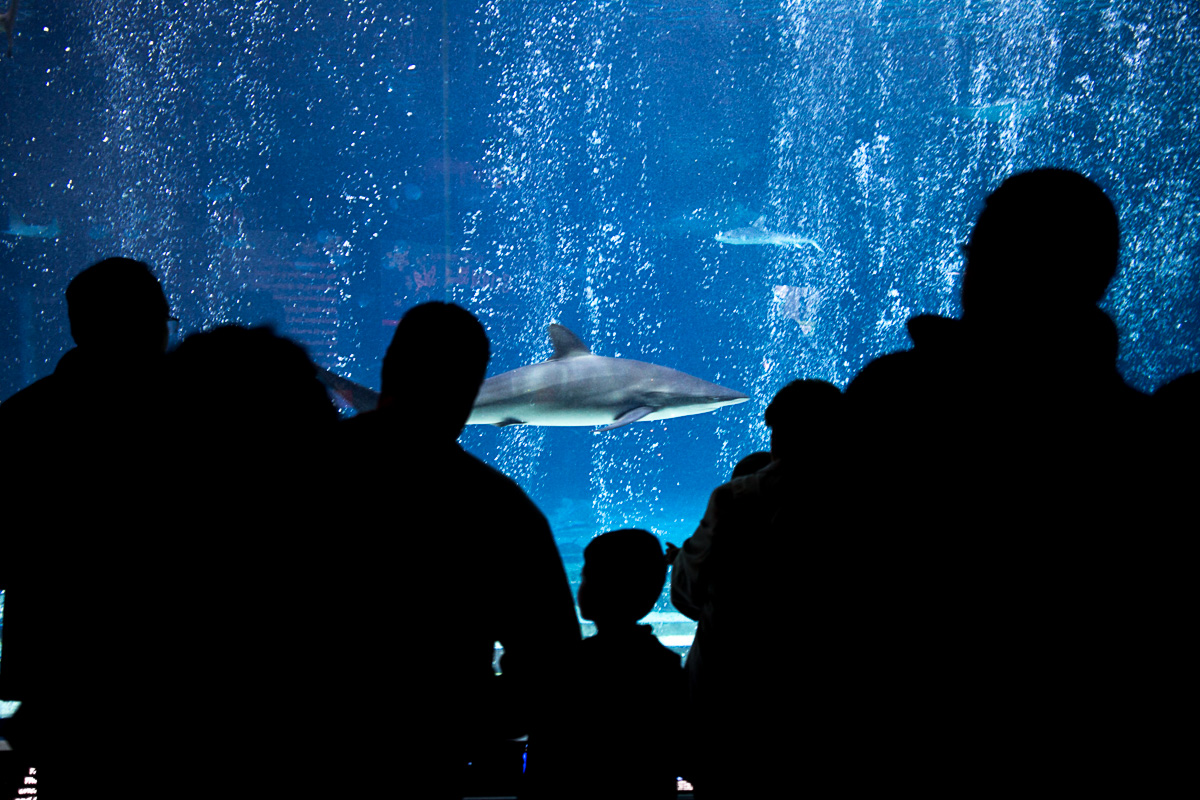
Look for anything unusual or eye catching, and try a shot, even if it might not work
I head a loud croak behind me and saw an educator holding up an African bullfrog in a small demo area. It wasn’t what I was expecting, but I was able to get up close and make a quick photo.
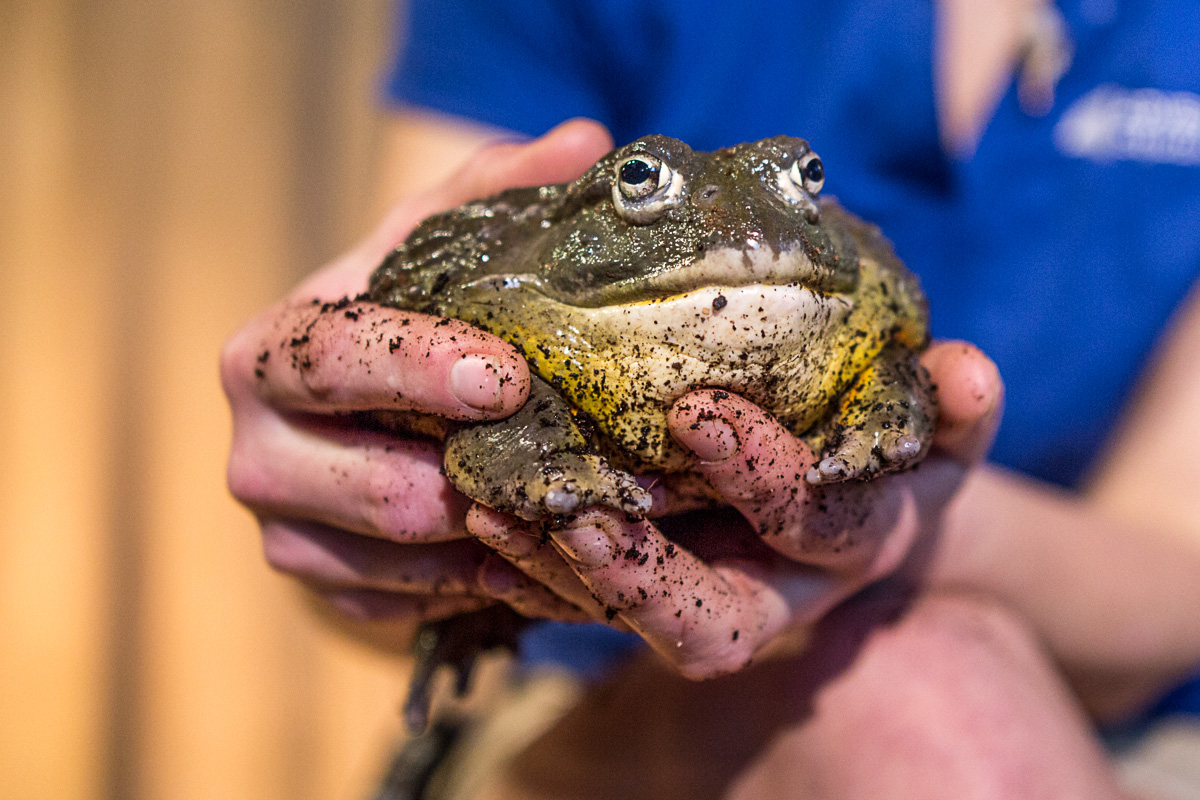
The Giant isopods, on the other hand; were a serious challenge. They were in a darkened area, with dim light, and even with an open-top tank, I wasn’t able to get a pleasing shot of these gigantic pillbug cousins in their small, dim touch tank in between a sea of other visitors. Not every shot is going to be a winner.
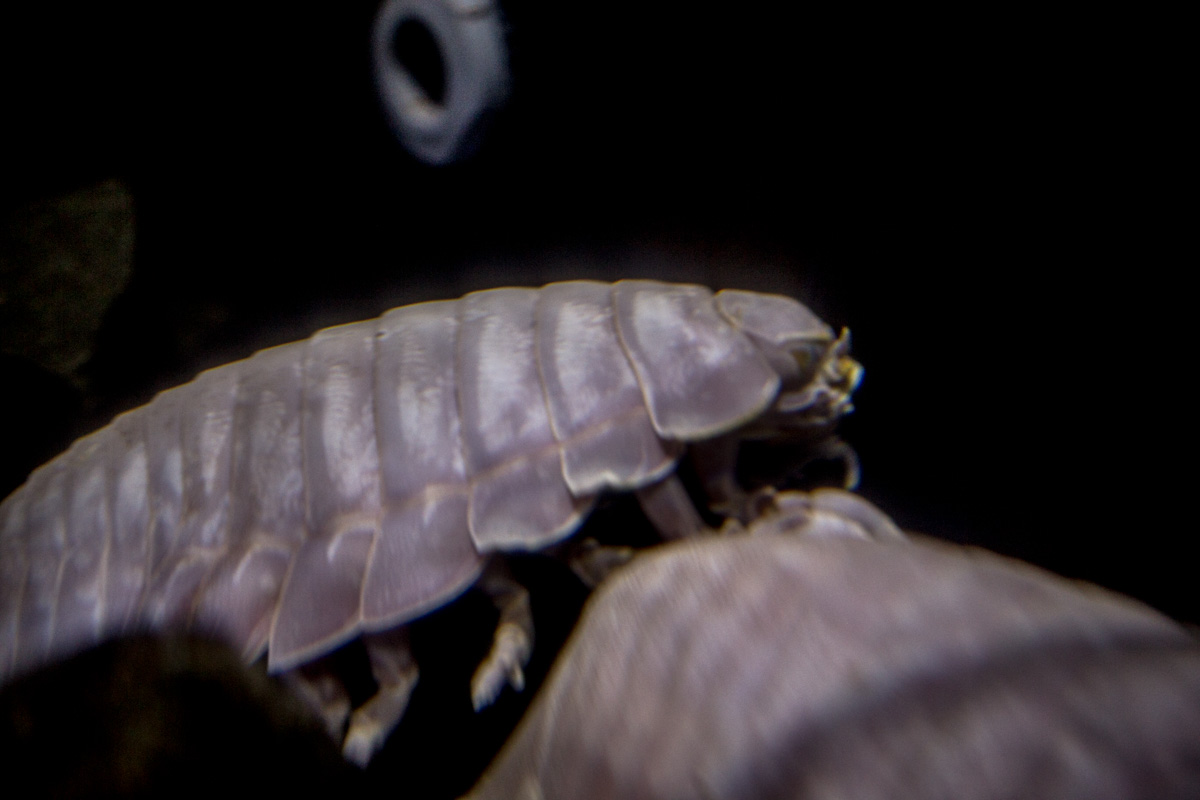
Accept that not every shot is going to be a winner
I missed a lot of shots on my recent visit, mostly of the smaller, fast-moving fish. It just wasn’t meant to be. And the pair of hippos were not active near the underwater viewing areas on all three occasions I stopped in on my most recent visit. So despite having the right lens, the right camera, and right settings, I couldn’t get a head-on shot of either hippopotamus through the water.
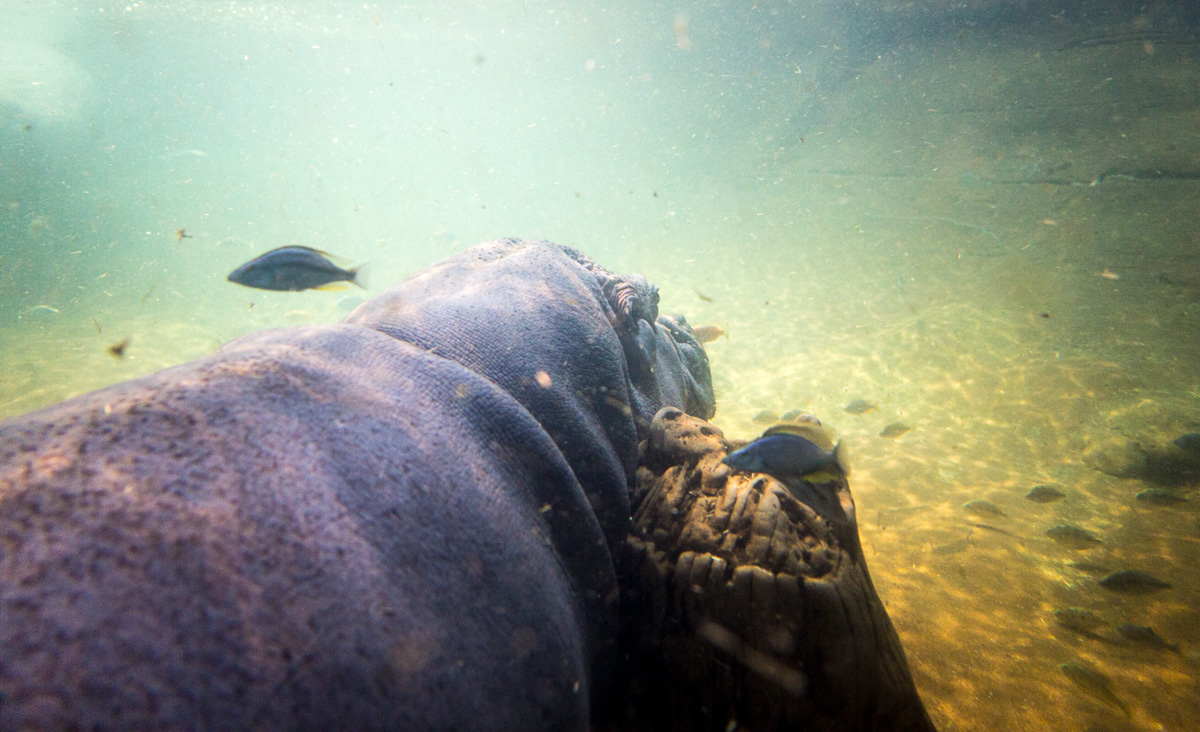
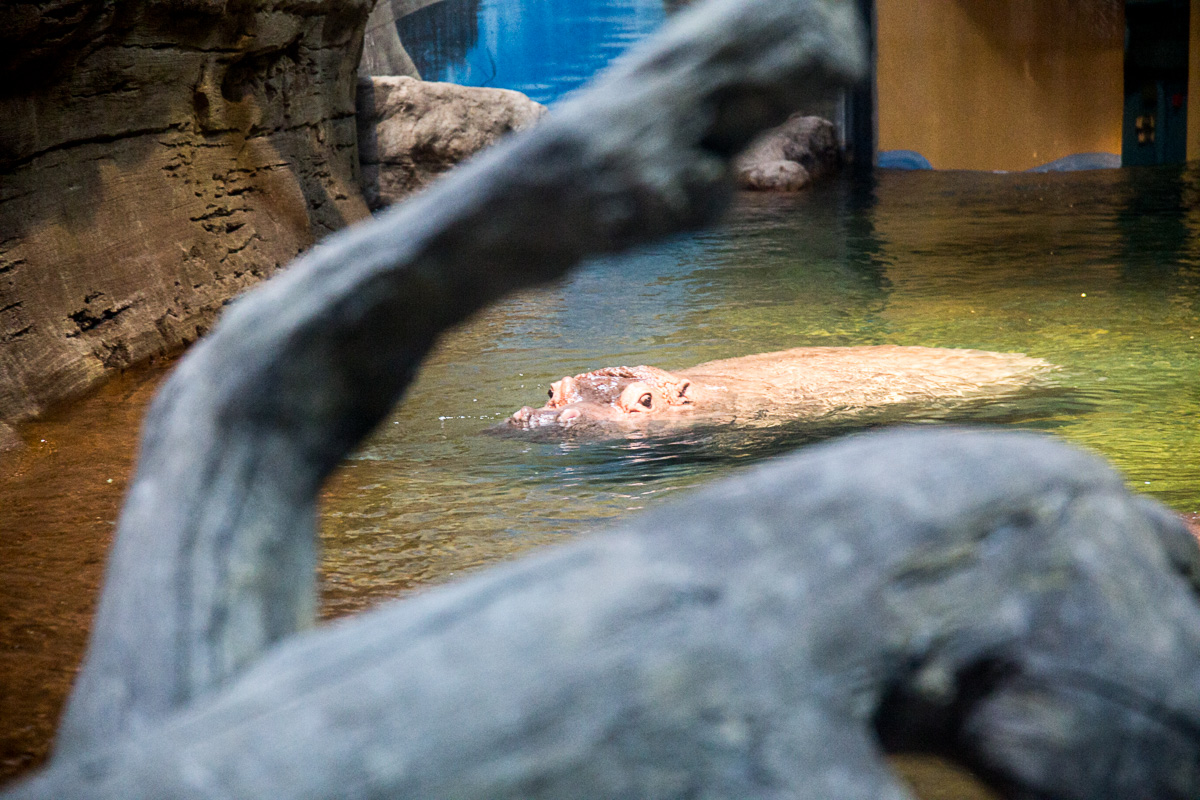
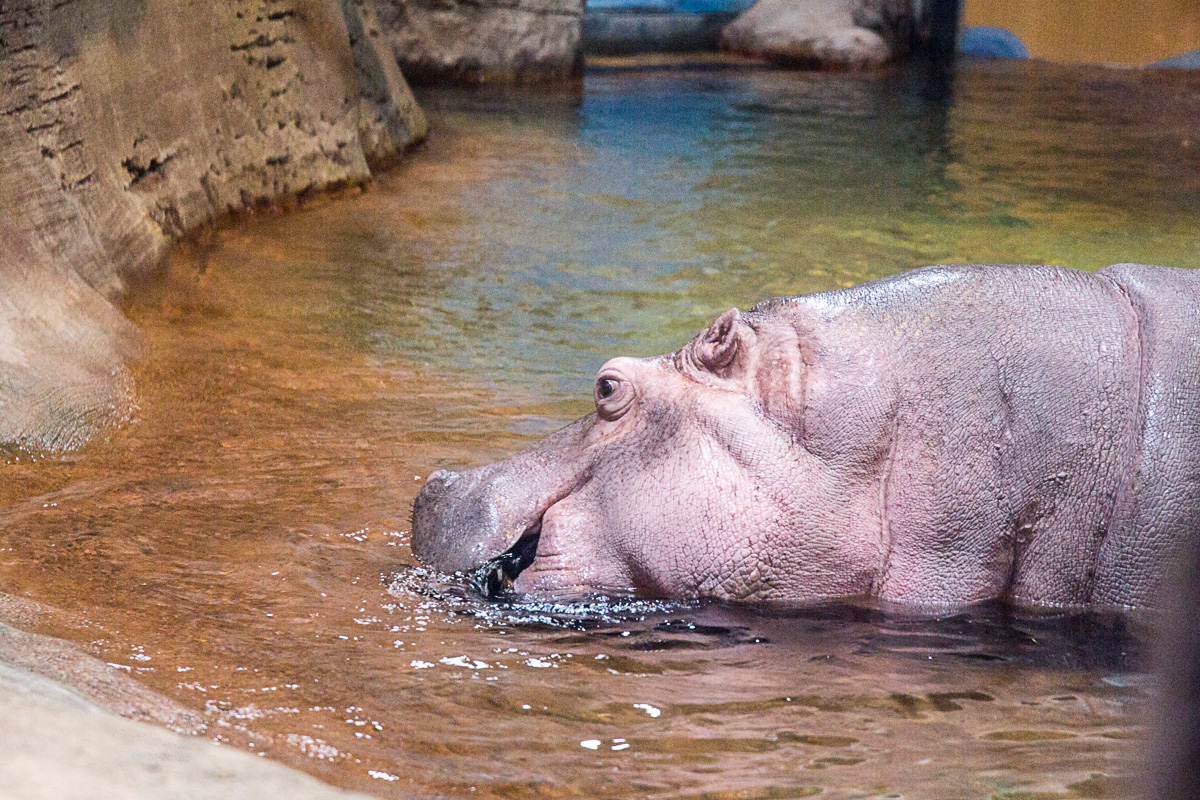
Skip on-board Flash, Especially through glass
Flash isn’t a good idea when shooting through thick glass. It will create hotspots, confound the metering, and probably won’t illuminate anything inside the tanks. And if you are shooting from above into touch tanks or otherwise open tanks, it can cause unwanted glare and reflections off the water surface.
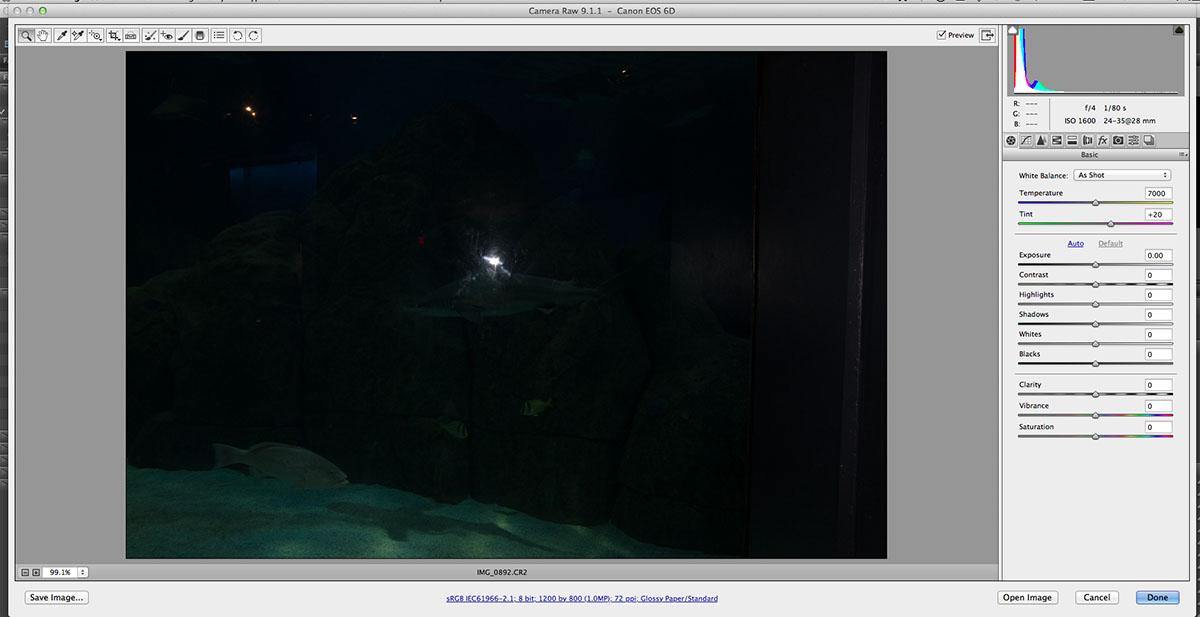
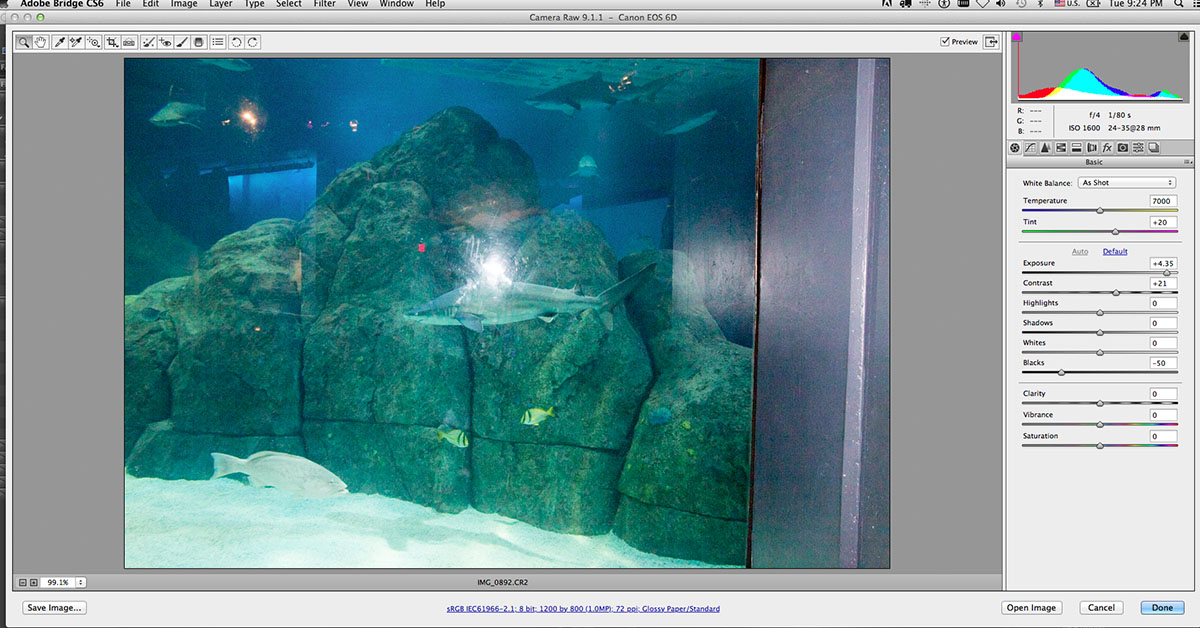
Try panning
If you are tracking the swimming of an animal on the other side of the glass, be sure to keep the motion of the camera consistent as it passes nearest to you as you fire the shutter button, particularly when the shutter speed is slower than 1/100 of a second in conditions like this. Matching the camera’s motion to the swimming motion can mean the difference between sharp edges on a moving subject and motion blur.
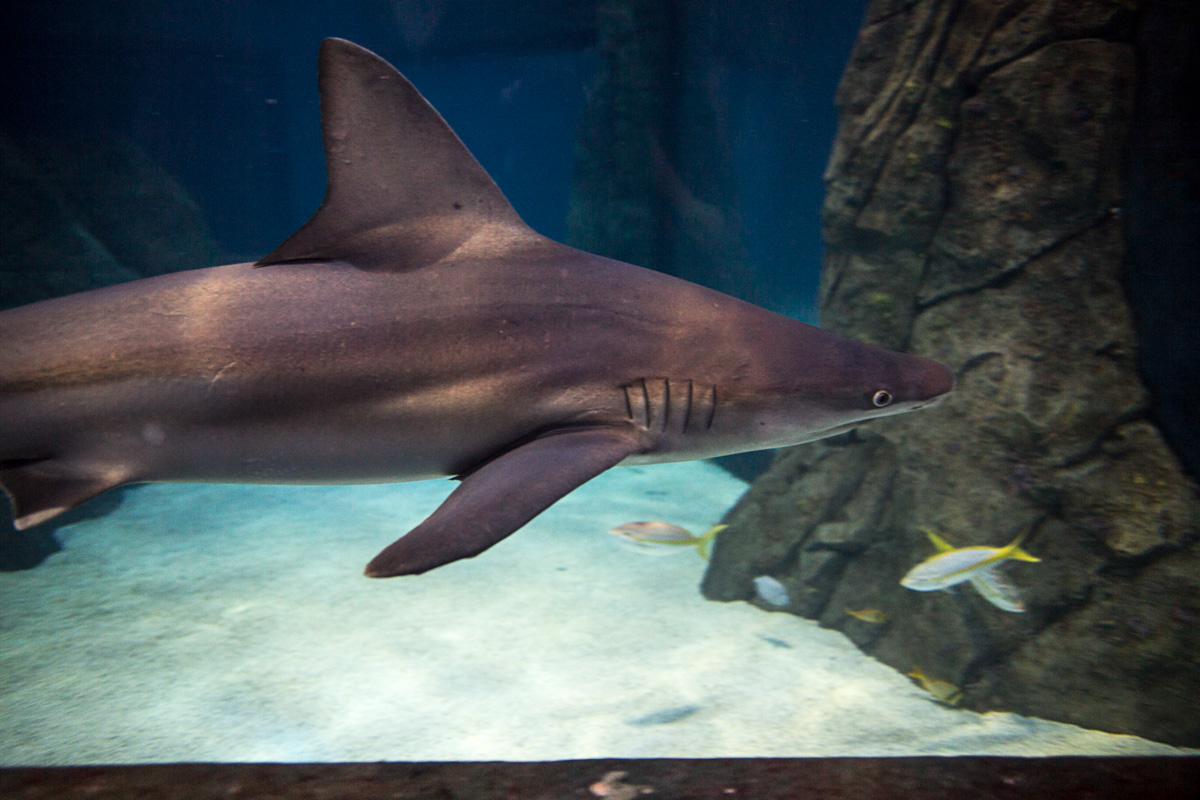
Prefocus when at a distance
When you know that the focal distance is hyperfocal, prefocus and turn off Autofocus, so you can fire the shutter without the lens trying to refocus. For example, I was about thirty five feet from this very large “theatre” window, and with the 24-35mm F2, that is well into the far end of the focal range, so anything inside the tank will be focused at infinity. So once focus was determinined, I switched off AF so that I could fire the shutter as soon something interesting happened “on screen.”
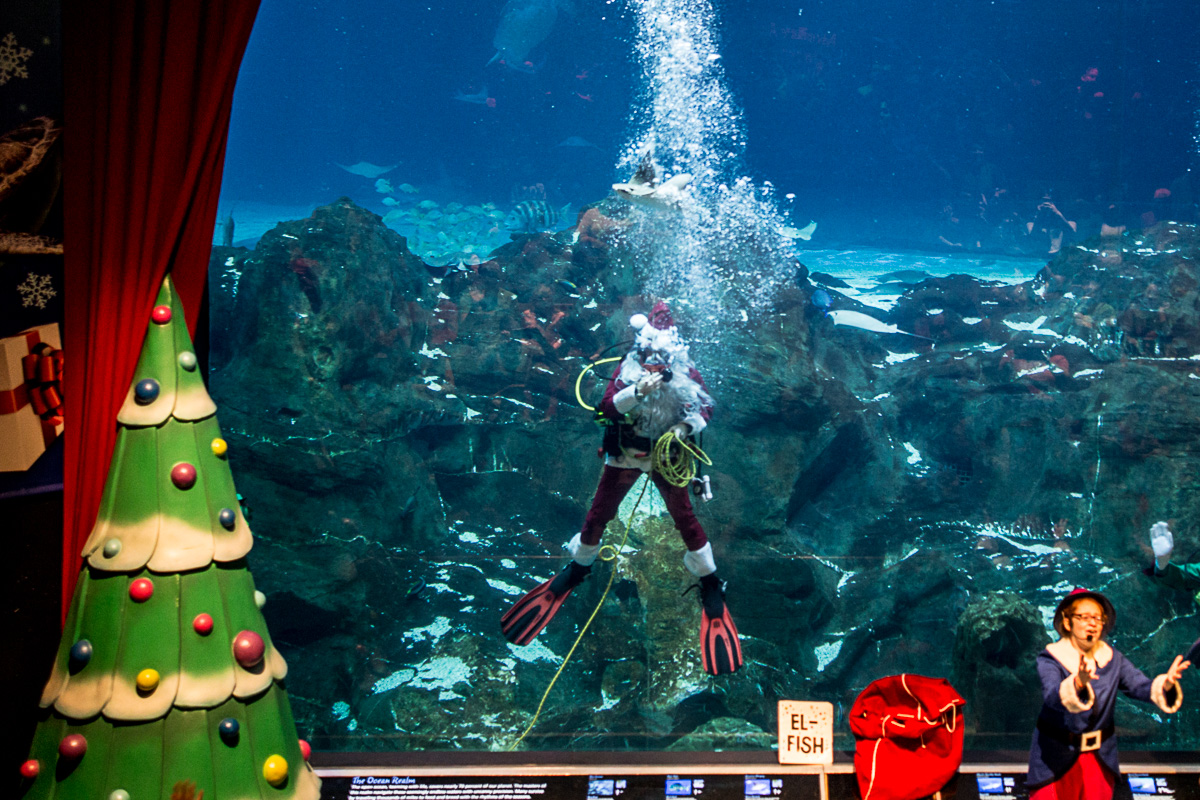
Remember that you don’t own the place
Try to remember that you don’t own the place, and that there are many other guests who have also paid admission to view the undersea creatures. You’ll see them reflected in the glass, in the corners of your frames, and so on. Crop them out if you can, try to minimize the reflections of people in the glass through creative RAW processing (AUTO processing in situations with high glare and low light has a tendency to produce terrible output images.)
And remember, a lot of the kids you’ll see may be at the aquarium for the very first time. Don’t be “that photographer.” Wait your turn, take your turn, and move on. Unless you’ve booked the place all for yourself and paid a steep rental fee for the privilege, don’t monopolize the best viewing spots for excessive periods of time.
Use Noise Reduction during processing
Lean heavily on Noise Reduction in image toning. It can do wonders to smooth out the noise in the colors and really make your images stronger.
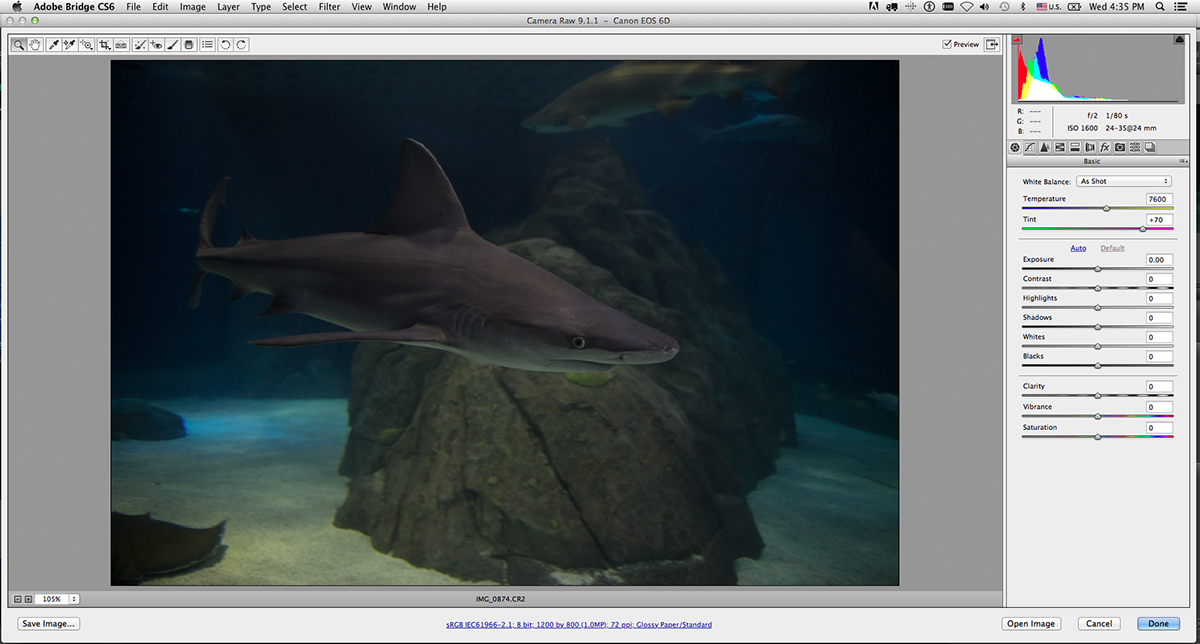
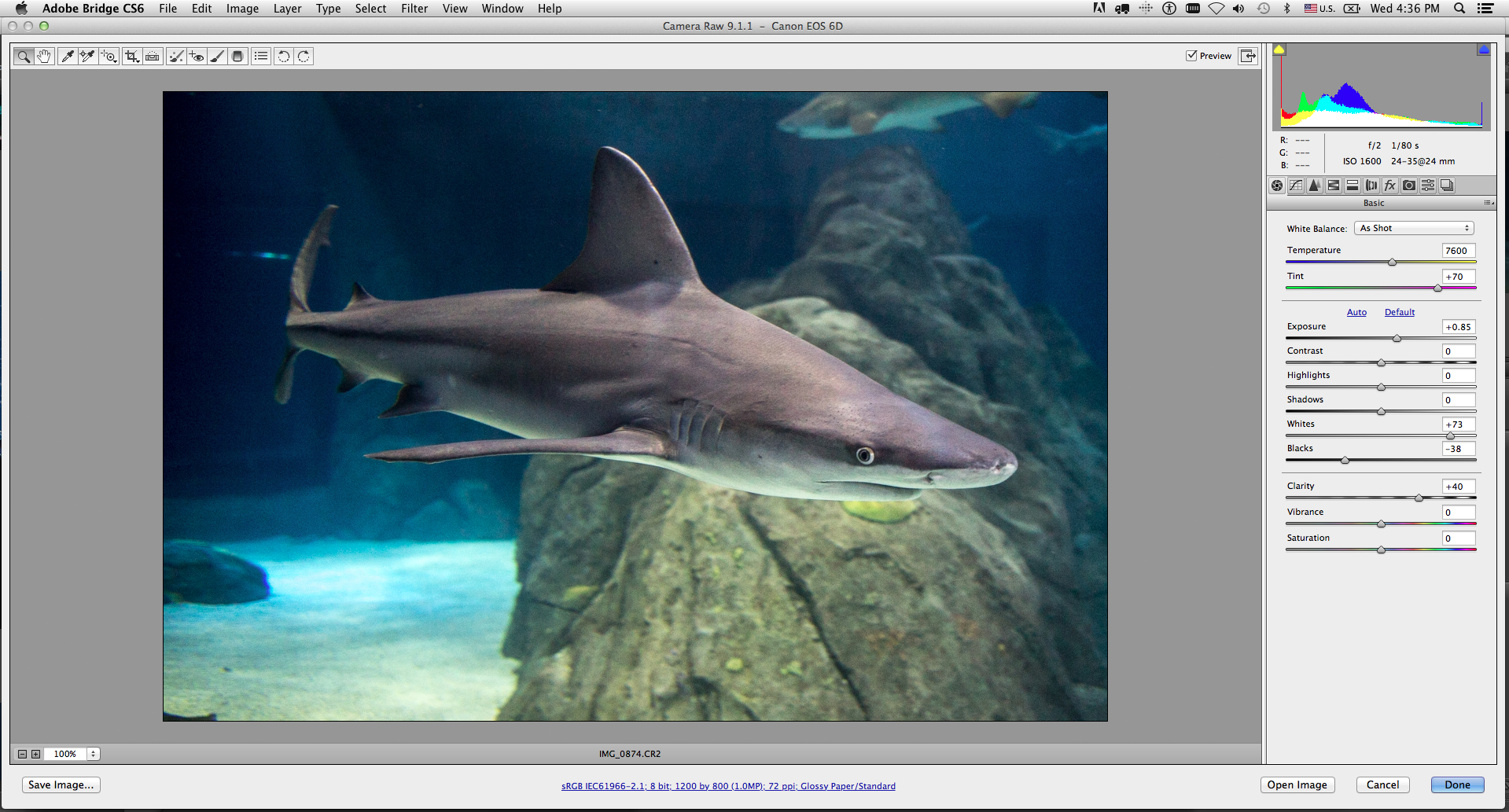
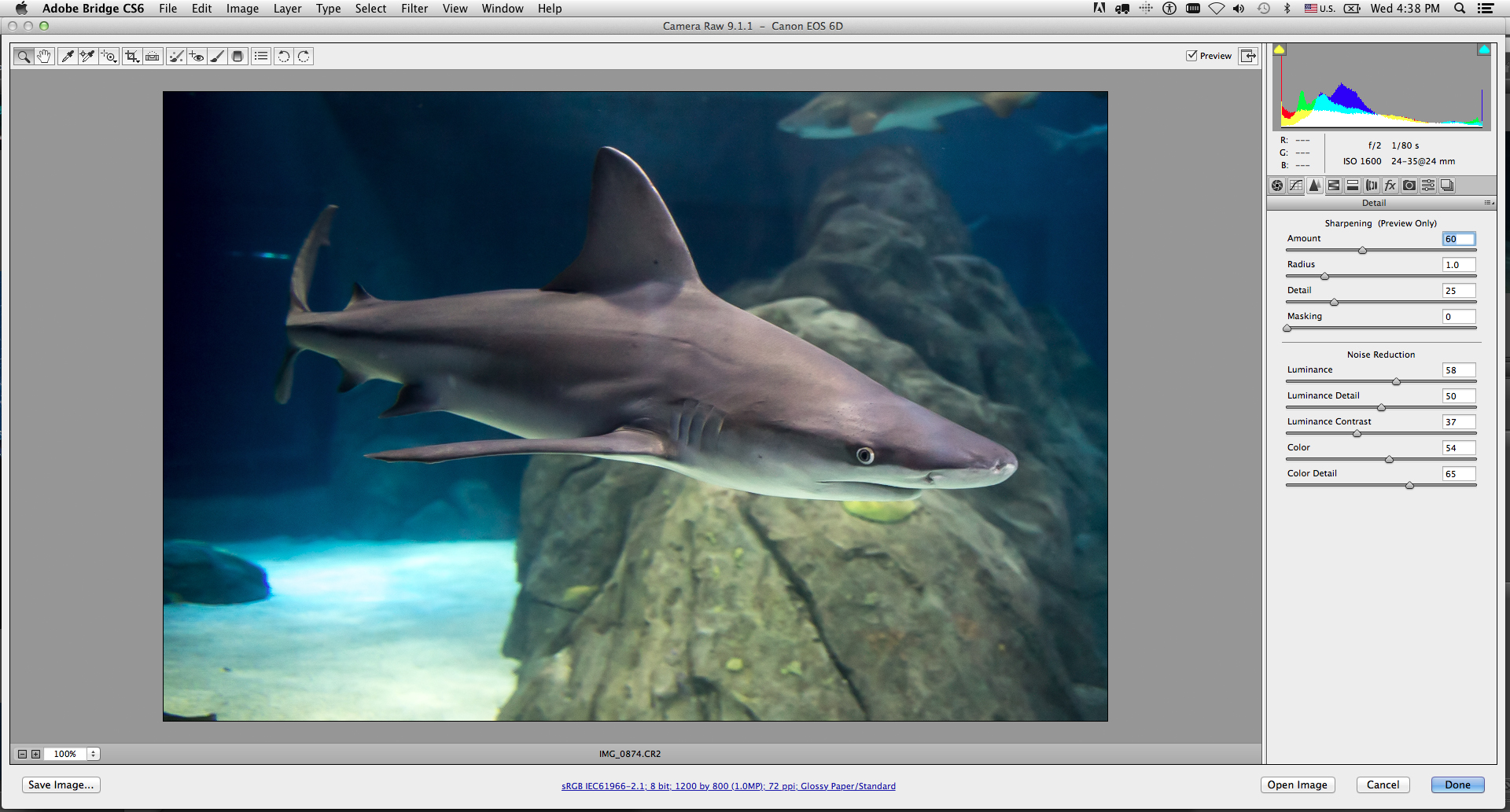
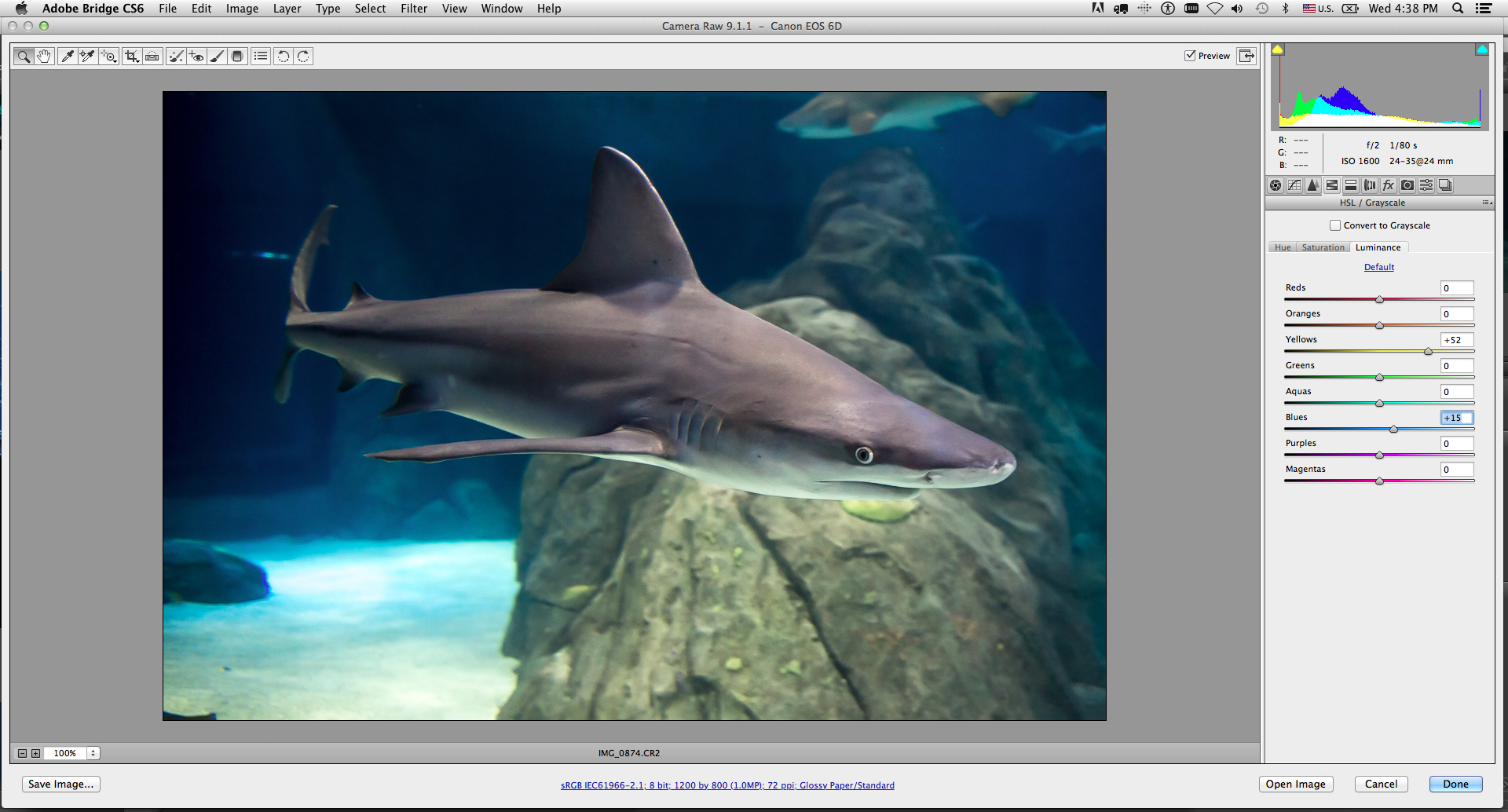
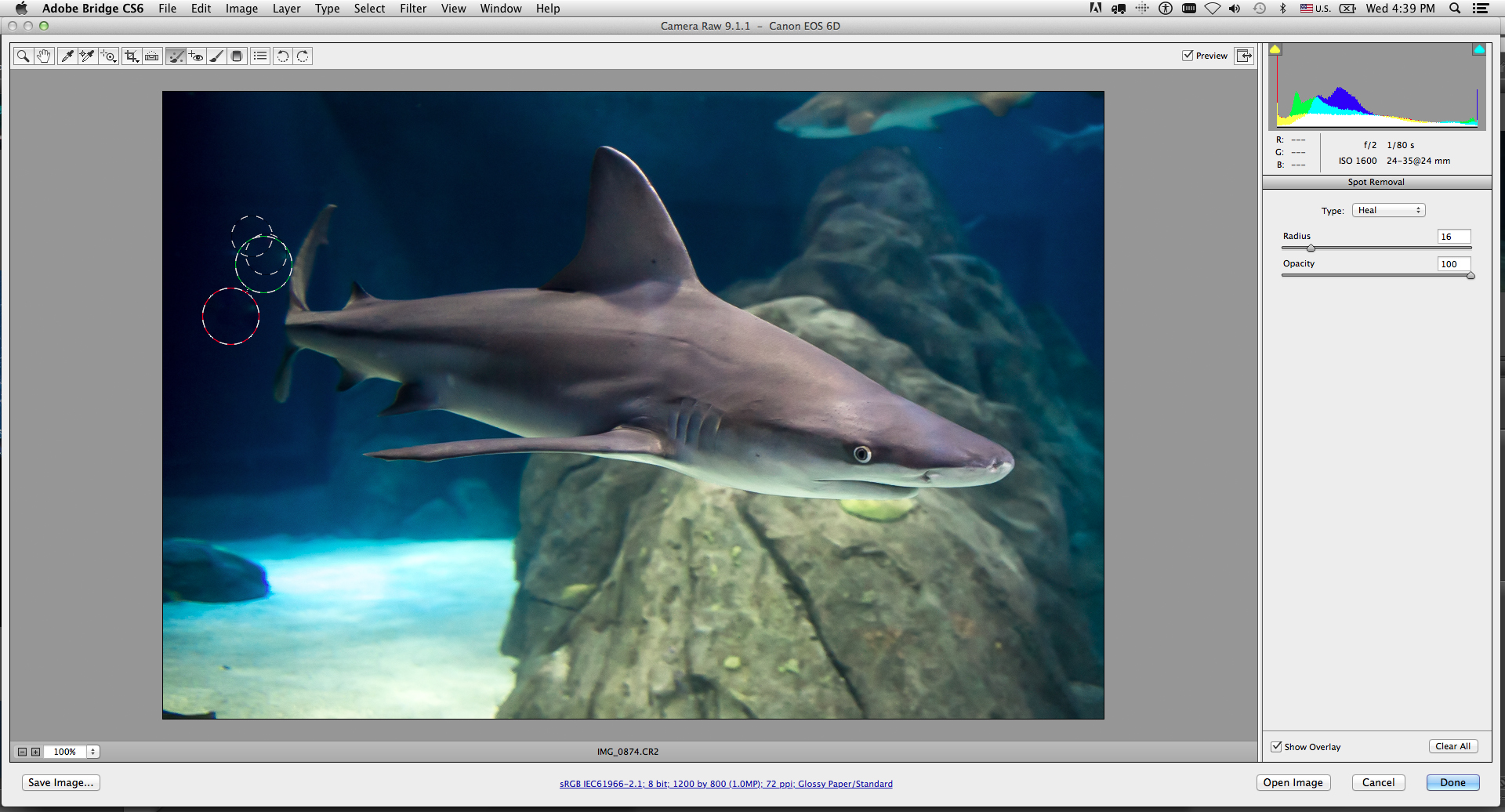
Be Ready for Anything!
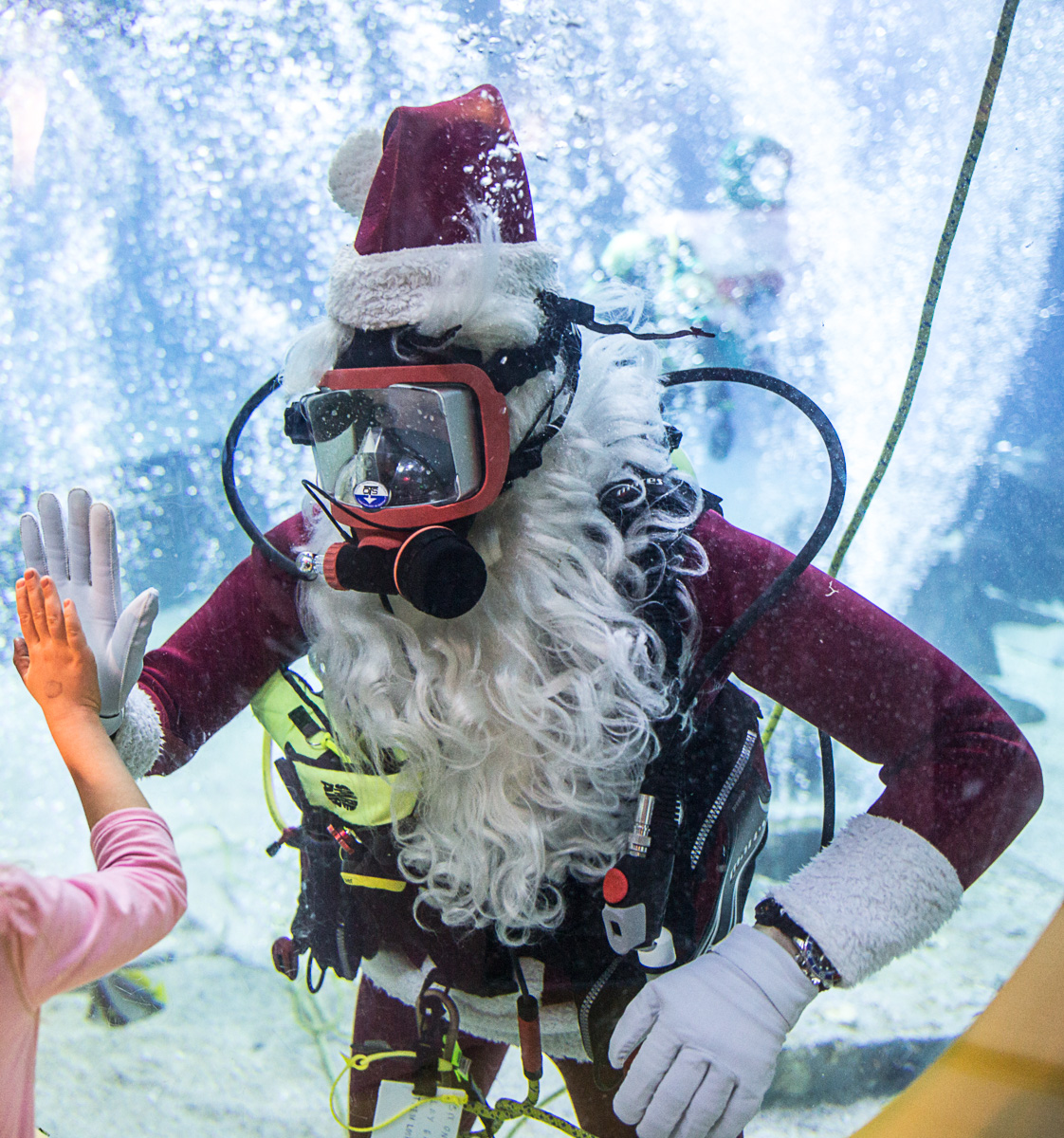
Keep mental notes of your varied manual exposures for certain viewing spots, and be ready for anything! You never know when something very photogenic is going to swim right past your window!

Really great article. Thanks for taking the time to explain things in such great detail in a way that is easy to understand.
Great photos, especially the shark. The list was great, I just wish people with their cell phones would learn about not using flash when taking photos.